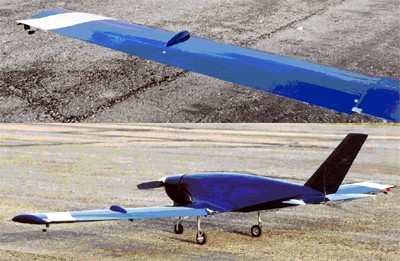Utah Professor Invents Wings That Change Shape To Reduce
Drag
Is this timely or what? Just as soaring fuel costs threaten to
harsh the recovery buzz within the airline industry, Utah State
University has applied for a patent on an invention that may save
the aviation hundreds of millions of dollars in fuel costs each
year.


Warren F. Phillips, a professor for 30 years in the mechanical
and aerospace engineering department at Utah State and a hang
glider pilot, invented a technology called Twisteron to minimize
drag on airplanes as they fly.
"If we can reduce drag on an airplane by even as little as 1
percent, it would create a tremendous amount of savings in fuel for
the airline industry and the US economy," Phillips said.
Phillips, who recently published a textbook called "Mechanics of
Flight," explained drag as the force that one feels when putting an
arm out the window of a moving car. The force pushing the arm back
is drag. When twisting the arm, one will feel an upward force,
which is called lift. Drag and lift are the aerodynamic forces that
act on an airplane in flight.
"Drag is what you pay for; it is a hindrance," Phillips said.
"In my hang glider the drag is what causes me to eventually sink
back to Earth. When an airplane like a 747 is flying at 40 thousand
feet, the engines are running only to overcome the force of
drag."
A typical 747 will burn about 75 gallons of fuel a minute and
can weigh up to 750 thousand pounds. Half of its weight can be
fuel. According to the Federal Aviation Administration, in 2004 US
civil aviation aircraft are expected to consume more than 24
billion gallons of jet fuel.


"You can look up anytime, almost anywhere on Earth and see a
plane in the sky," Phillips said. "Airplanes burn a tremendous
amount of fuel."
Twisterons work by twisting the wings during flight. Twisting
wings is a concept that has been around since the Wright brothers
made their first flight and used wing warping. The wings of the
Wright Flyer were twisted in opposite directions in order to turn.
Utah State’s Twisteron technology is a little different. The
wings are twisted in the same direction using a precise formula to
help reduce drag.
"The amount of twist the Twisterons use is determined by
altitude, weight and the speed the airplane is traveling," Phillips
said. "Those conditions change during flight. The Twisterons adjust
to those changes to always produce minimum drag."
This technology was tested during the 2003 National Design,
Build, Fly competition. Utah State students designed and built an
airplane with Twisterons. Their design report won first place. The
airplane experienced a 20 percent reduction in drag during steep
turns and a 7 percent reduction in level flight.
"High lift or low speed situations, such as takeoff,
landing and steep turns are when you get the greatest fuel
savings," Phillips said. "You wouldn’t experience a
significant G-force when turning in a commercial airliner, but even
a small savings would make a huge impact."
Phillips said the idea came to him overnight. He woke up one
morning knowing all about Twisterons and did not know anything
about them when he went to bed the night before. He said his
experience as a hang glider pilot may have also played a role.

"Hang gliding gives you a real feel for flight," the Utah State
professor said. "I have flown airplanes, and when you are flying an
airplane you are driving a machine. When you are flying a hang
glider it is literally like being a bird; you feel the air and your
thoughts control the glider. It gives a real feel for lift, drag,
and how the air interacts with the wings, much more so than you
would get from flying a machine."
Phillips said he has won an award for a paper he published on
Twisteron technology, and his peers are impressed with the
technology because of its simplicity and the beauty of the
mathematics that led to it. He hopes the technology will be put to
use and his invention will change the airline industry for the
better.
Utah State University Research Foundation’s Technology
Commercialization Office (TCO) is looking to license the technology
to commercial aircraft manufacturers and possibly others. The
technology may also have use beyond aviation. The technique may be
applied to water craft or land vehicles.
"With jet fuel costing over $15 billion in the US in 2003 this
technology will have significant economic impact, especially in a
time when we are seeing a continual increase in fuel prices." Ray
DeVito, Ph.D., physical science commercialization manager at TCO,
said.
Using the 2003 figures DeVito calculated that if a reduction in
drag of 2.5 percent was achieved in commercial airplanes it would
amount to about $400 million of savings in fuel costs.
"As jet fuel consumption increases and prices rise, the
potential savings would approach a billion dollars per year over
the next decade," DeVito said.
Utah State University’s mechanical and aerospace
engineering students have notable experience in designing and
building planes. Their accomplishments include the building of the
internationally renowned USU Wright Flyer, the only stable flying
replica of the Wright Flyer. They won first place for their design
report in the National Design Build Fly Contest four times and won
the total competition twice, giving Utah State University the
distinction of being the only university to have won it more than
once.
 ANN's Daily Aero-Linx (04.15.24)
ANN's Daily Aero-Linx (04.15.24) Classic Aero-TV: 'No Other Options' -- The Israeli Air Force's Danny Shapira
Classic Aero-TV: 'No Other Options' -- The Israeli Air Force's Danny Shapira Aero-News: Quote of the Day (04.15.24)
Aero-News: Quote of the Day (04.15.24) Airborne 04.16.24: RV Update, Affordable Flying Expo, Diamond Lil
Airborne 04.16.24: RV Update, Affordable Flying Expo, Diamond Lil ANN's Daily Aero-Term (04.16.24): Chart Supplement US
ANN's Daily Aero-Term (04.16.24): Chart Supplement US







